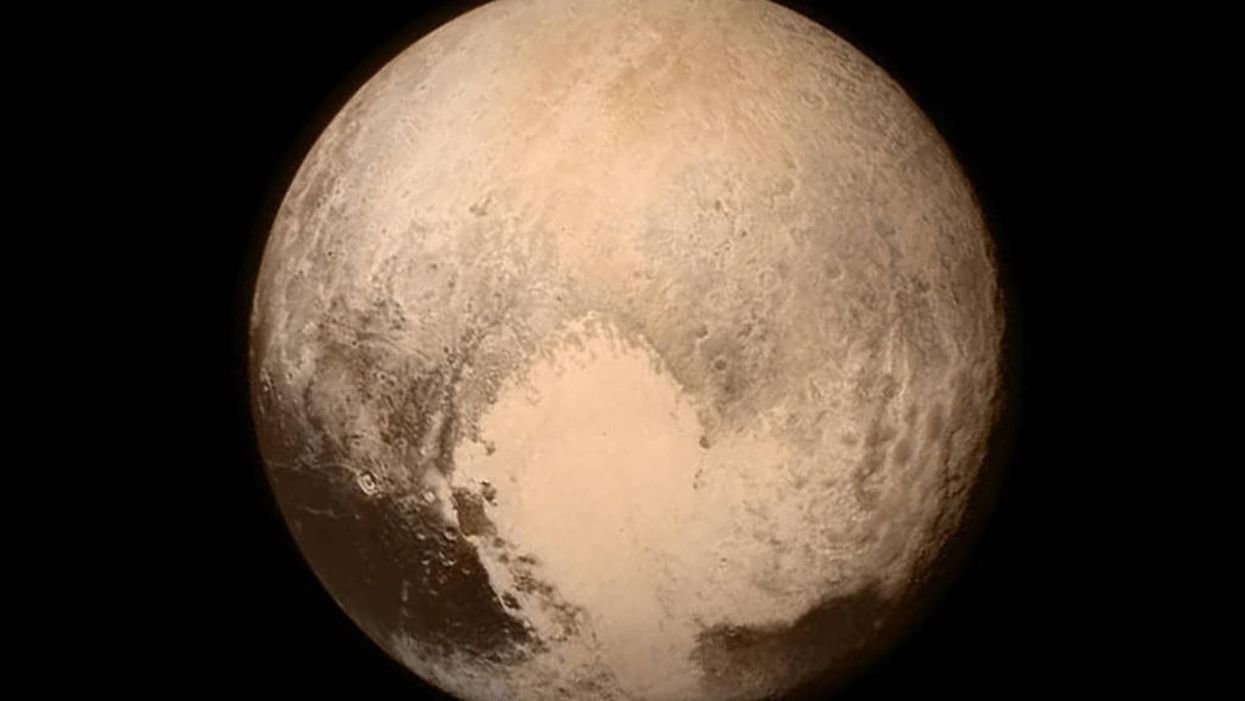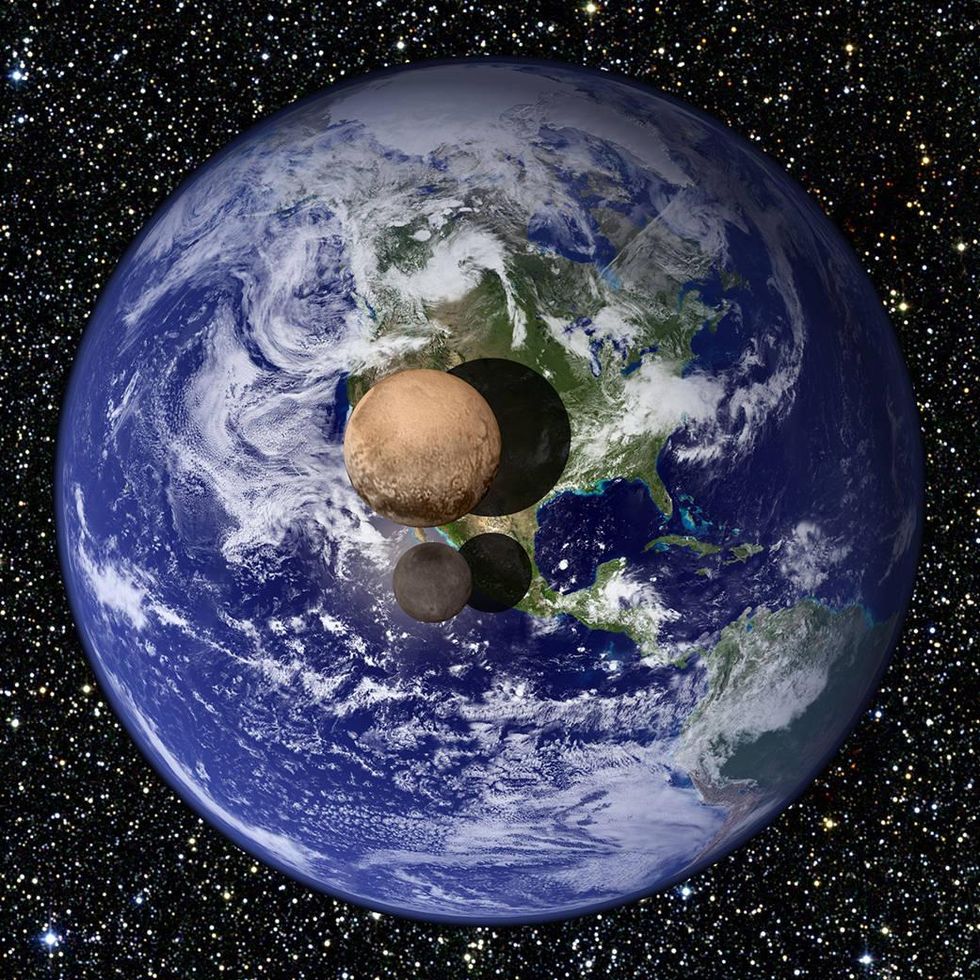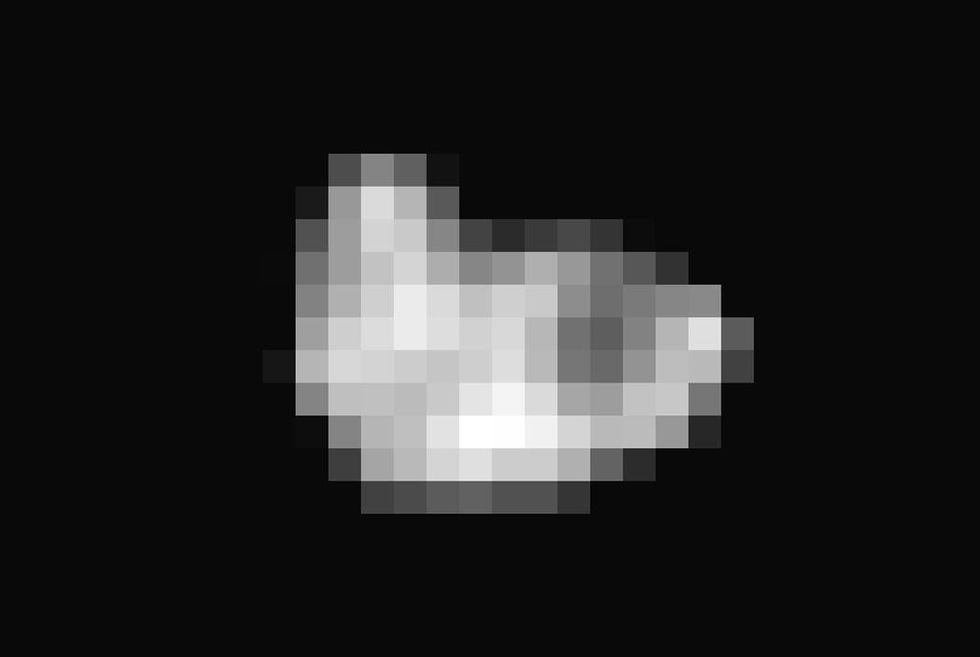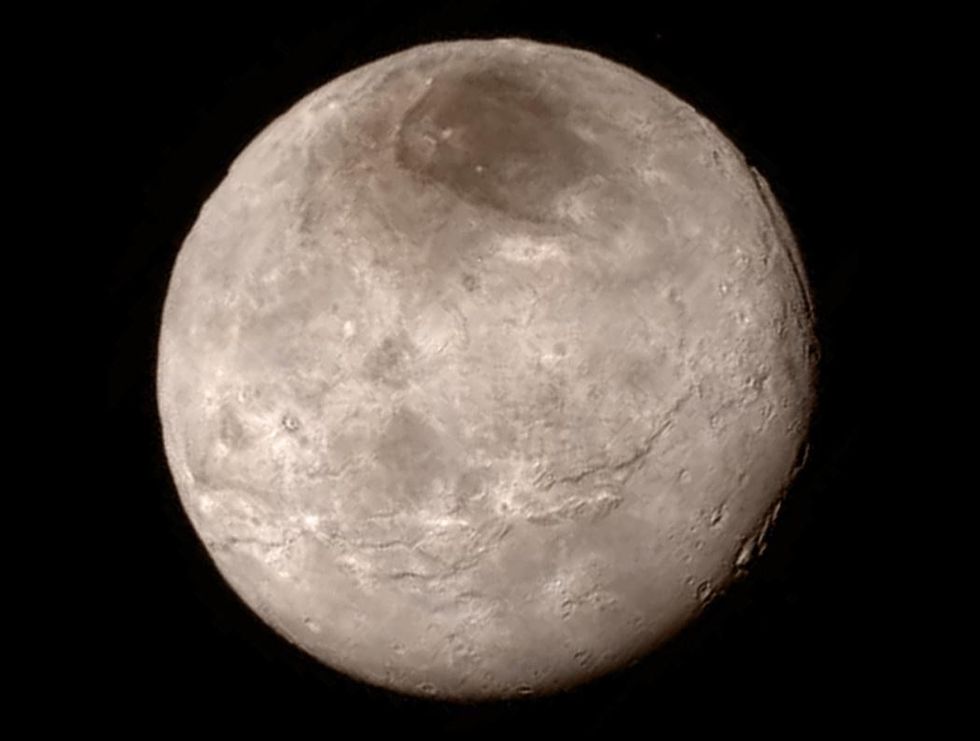Science & Tech
Louis Dor
Jul 16, 2015

(Photo: Nasa/New Horizons
After Nasa's New Horizons spacecraft made a successful fly-past of Pluto, the space agency learned a staggering amount about the dwarf planet which orbits on the edge of our solar system.
This gif showed just how quickly our knowledge of Pluto has increased:
The $720 million (£461 million) probe is the size of a baby grand piano and, after launching on January 19 2006, it reached an Earth-relative velocity of 36,373mph, making it the fastest space vehicle in history.
The programme only cost $0.15 dollars per American per year - which is an incredibly small outlay for a mission that was so successful.
The craft sent images back to Nasa from nearly three billion miles away after it passed within 7,700 miles of Pluto, and here’s what we have learned since:
We’ve seen Pluto’s heart
Heart-shaped feature that is. It’s approximately 1,000 miles (1,600 kilometers) across, and new images have shown how gorgeous it is.
The 'heart' borders darker equatorial terrains, and the mottled terrain to its east is complex.
Icy mountains
New close-up images of a region near Pluto’s equator revealed a giant surprise: a range of youthful mountains rising as high as 11,000 feet (3,500 meters) above the surface of the dwarf planet.
The mountains on Pluto likely formed no more than 100 million years ago. In comparison, the solar system is 4.56 billion years old.
This suggests the close-up region, which covers about one percent of Pluto’s surface, may still be geologically active today.
Pluto’s size
While we’ve known the approximate size for a while, Nasa’s New Horizons team took new measurements of the dwarf planet and its moon Charon, producing a mock up of their size relative to Earth.
The dwarf planet has a potato-shaped moon
Hydra was discovered in 2005 and has been known only as a fuzzy dot of uncertain shape, size, and reflectivity.
While the photo obtained by Nasa is still a bit, well, pixelly, the image shows the tiny potato-shaped moon measures 27 miles (43 kilometers) by 20 miles (33 kilometers).
We also know what its largest moon looks like
On Wednesday Nasa unveiled images of Charon and scientists were surprised by the apparent lack of craters.
A swath of cliffs and troughs stretching about 600 miles (1,000 kilometers) suggests widespread fracturing of Charon’s crust, likely the result of internal geological processes.
The image also shows a canyon estimated to be 4 to 6 miles (7 to 9 kilometers) deep.
And a part of Charon might soon be called Mordor
Really! Members of the New Horizons team like to refer to a dark patch near the north pole of Pluto's largest moon, Charon, as Mordor, the home of Sauron and Mount Doom in The Lord of the Rings.
Although is not the formal name of the region it is one of many names under consideration for Charon's landmarks.
However, the fun may be derailed as everything has to be approved by the International Astronomical Union.
One does not simply rename a part of Pluto's moon Mordor...
More: This Nasa gif shows just how amazing New Horizons's Pluto fly-past was
Top 100
The Conversation (0)
















